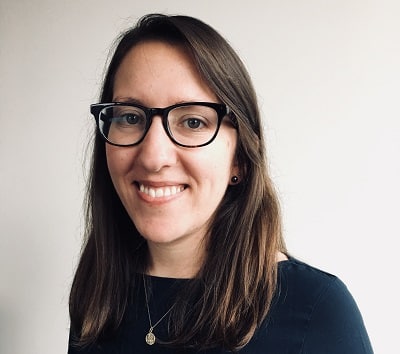Schools from Washington to New York, and everywhere in between, are welcoming students back to school buildings, heralding a much-desired return to some form of normalcy for many families. At the same time, there are strong tailwinds behind the idea that reverting to the status quo will fail to address deep equity and student experience issues that have come to the fore during the pandemic.
Some leaders are arguing that schools should aim for an approach that combines recovery with redesign. As a result, in the future, we could look back on this year as the one in which COVID changed schools forever.
But changes to the status quo will be adopted only if there’s demand for them. So while it’s simple to say that COVID will change schools, the fact is, people will change schools—and for more reasons than one.
In fact, we’re learning that a number of promising changes are already underway in schools, and the reasons behind them are varied. Since October 2020, we’ve been interviewing K–12 school leaders in the Canopy project, a national database on school innovation, to understand what’s motivating them to make the changes they’re most enthusiastic about. Here’s what we’re learning so far:
A set of pushes and pulls
Leaders have described a wide variety of promising changes their schools have undertaken since the onset of COVID-19. And while the details of those changes are compelling, the Canopy interviews are designed to reveal not just what changed, but why.
Inspired by Jobs to Be Done Theory, each interview begins by prompting leaders to tell the story of the change they’ve made, beginning with the first thought they ever had about it. During each story, we’ve been on the lookout for what is pushing leaders away from existing behaviors or practices, and also what is pulling them toward new behaviors and practices.
Pushes away from existing practices
One force pushing leaders away from existing behaviors was a realization that their usual ways of doing things had become temporarily impossible. For example, when school buildings closed last spring, leaders at Fred Tjardes School of Innovation (FTSOI) in Greeley, CO realized that the school’s Museum Night tradition was under threat. Social distancing requirements prevented students from showcasing their project work in-person, so the school ultimately opted for digital exhibitions. Although Courtney Luce, a school co-founder, wasn’t originally enthusiastic about the change, she reflected that the virtual format has introduced more opportunities for students to share their work with a real-world audience than ever before. But the school likely wouldn’t have tried digital exhibitions without the status quo becoming impossible.
Another force pushing leaders away from the status quo was learning about previously hidden problems with existing practices. At Northeast Academy for Aerospace and Advanced Technologies (NEAAAT) in Elizabeth City, NC, A-F grading was the norm. But as the school transitioned to remote learning, A-F grades quickly came up short because they did nothing to communicate to families what, exactly, students needed to learn in order to pass a class. “A grade of 75% didn’t tell them enough,” said principal Andrew Harris. The school quickly initiated a transition to standards-based grading in part because, while traditional grading had always been opaque when it came to learning targets, that problem became acute and unavoidable during the pandemic.
A third force pushing leaders away from existing practices was pressure to “walk the talk” about racial equity. For example, at Washtenaw Alliance for Virtual Education (WAVE) in Michigan, teacher-leader Sarah Giddings reflected, “Black Lives Matter created a reckoning that…we’re not living this diversity, equity, and inclusion model that we all agreed on in our mission statement.” This reckoning was one reason behind the school’s adoption of a leadership model that’s “decentralized to the max,” in Giddings’ words. The school had already been led by a team of four teachers, but according to Giddings, that team still acted as a centralized decision-making body. The school is now leaning into decision-making by committee—a leadership model that still needs to be improved and streamlined, but that Giddings predicts will remain distributed.
Pulls toward new practices
One force that pulled some leaders toward new changes was a desire to find new ways to implement their schools’ core approaches, even while circumstances around them changed. For example, at Iowa BIG, executive director Trace Pickering felt strongly that students should be able to keep working on real-world projects—an important part of the Iowa BIG experience—during the pandemic. But given the pressure students were under, staff decided that students would only work on one project at a time rather than two, and for shorter time periods. Pickering has been surprised to learn that students seem much more engaged in their projects, and the new schedule unlocks extra time for activities that support student well-being. But the original motivation for the change was to find a new way to maintain an existing practice.
Another force pulling leaders towards new behaviors was the desire to meet new needs created by new circumstances. At Uxbridge High School in Uxbridge, MA, before the pandemic, principal Michael Rubin had already initiated an overhaul of the school’s approach to Multi-Tiered Systems of Support (MTSS) in order to provide students with better individualized learning support according to their level of need. But as the school began to notice a surge in course failure rates during COVID, Rubin and his staff accelerated their efforts to make accommodations available to more students, and to host individualized conferences with families in order to strategize about custom supports to help students succeed. The acceleration of scalable systems for individualized supports wouldn’t have happened if not for the new, more challenging circumstances brought on by the pandemic.
Lastly, one pull force for some leaders was the idea that new circumstances finally allowed them to do something they had always imagined. For example, CEO Shawn Loescher from Urban Discovery Schools in San Diego, CA, had always imagined reorganizing the high school’s staffing model so that teachers could focus on instruction, while community support staff coordinated student supports and checked in regularly with families. Especially once COVID forced school buildings to close, Loescher and his team determined that the ground was fertile for such a change, since teachers were finding it even more difficult than usual to play both roles at once.
Each of these examples focuses on one specific reason behind adopting a new practice, but in reality, each school’s story of change features a combination of both push and pull forces. For example, while Andrew Harris from NEAAAT described feeling pushed away from A-F letter grades due to parents’ demands for a more transparent system, he also felt strongly pulled towards the idea of standards-based grading, which he had been wanting to implement for a long time but was never able to prioritize. Additionally, FTSOI’s adjustment to virtual Museum Night resulted from both a push away from a practice that became impossible, and a pull towards a new practice that would maintain an important experience for students.
Ensuring lasting change
These examples clearly show that school leaders’ decisions to introduce changes are about much more than just COVID. In fact, the unique combinations of pushes and pulls in each school’s context will strongly influence whether changes stick around after COVID ends. For example, if a change was undertaken mainly because the old way of doing things became temporarily impossible, we might expect the school to more easily revert back to its old ways once COVID passes. But if the primary motivations for making a change were to solve a persistent underlying problem and to realize a long-held aspiration, there’s a higher likelihood that new practices remain in place.
In the next few months, I’ll continue interviewing leaders from Canopy schools to learn about what’s motivating the promising changes they’re making. In the meantime, what are the forces that you see motivating schools to make promising changes this year? Let us know in the comments or on Twitter!



